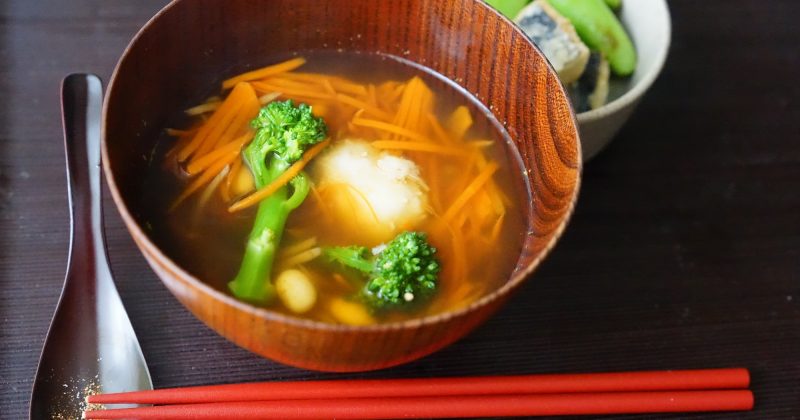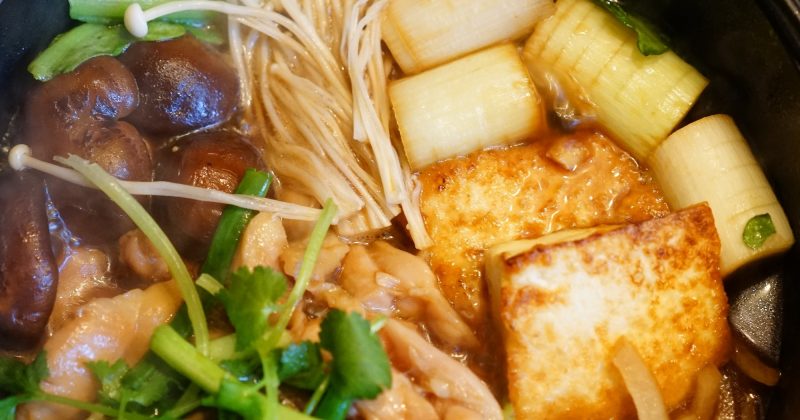味噌湯配搭一份肉類及蔬菜,組合成健康中式早餐,有齊基本營養要素,跟以奶品類為主的西式早餐交替安排,選擇種類越多元化越好。 Continue reading →


味噌湯配搭一份肉類及蔬菜,組合成健康中式早餐,有齊基本營養要素,跟以奶品類為主的西式早餐交替安排,選擇種類越多元化越好。 Continue reading →

年卅,弄個日式牛肉鍋慶節,以甜醬油澆煮牛肉,資深日廚斉藤辰夫,建議和牛加熱至80至90度,最能讓雪花牛的肉脂跟甜味醬油融和,換上雞肉代替和牛,加大量時蔬,按他的醬汁配方試一試。 Continue reading →
The human skeletal-muscular system contains highly trainable tissue that can be remarkably effective in managing glycemic control, which in turn helps manage or prevent type 2 diabetes. Hurley, Hanson and Sheaff (2011) note that muscular strength is inversely related to metabolic syndrome, a cluster of risk factors leading to the development of type 2 diabetes and cardiovascular disease. The researchers add that high insulin levels, low muscle mass and low strength are the strongest factors associated with increased risk of metabolic syndrome. Continue reading →
Training Design for Diabetes
Resistance training for people with type 2 diabetes improves glycemic control, insulin resistance, body composition, blood pressure and strength. People with diabetes are at a higher-than-average risk for low muscular strength and loss of functional abilities.
The American Diabetes Association recommends 2 to 3 sessions of resistance exercise per week, on nonconsecutive days, in addition to other types of physical activity, according to “Physical Activity/Exercise and Diabetes: A Position Statement of the American Diabetes Association”.
Ishiguro et al. (2016) also suggests that two to three resistance training sessions per week may be optimal for improving people’s HbA1c levels. The researchers note that more sessions per week don’t appear to have any greater benefit. Ishiguro and colleagues note that most studies on exercise and diabetes strive to progress resistance exercise intensities to 60%–80% of one-repetition maximum. The data indicate that high volume (multiset) training is almost certainly required to lower HbA1c levels. Ishiguro and colleagues say workout sessions need to build up progressively to 21 or more sets to meaningfully reduce HbA1c levels. Most importantly, Sigal et al. (2007) highlight from their research that while either cardiovascular or resistance training alone improves glycemic control in type 2 diabetes, improvements are greatest when exercise programs combine resistance training and cardiovascular exercise.
Further readings:
>>>Why Muscular Strength important to manage diabetes? & what are Hemoglobin A1C (HBA1C) and EAG?
References:
“Strength Training and Type 2 Diabetes”, by Shirley Archer, JD, MA , IDEA Fitness Journal, Jan 16, 2018
“Resistance Training and Diabetes”, by Kurt Escobar, MA and Len Kravitz, PhD, IDEA Fitness Journal, Mar 13, 2016
Ishiguro, H., et al. 2016. In search of the ideal resistance training program to improve glycemic control and its indication for patients with type 2 diabetes mellitus: A systematic review and meta-analysis. Sports Medicine 46, (1), 67–77.
麵包配咖啡是最便利的早晨飲食組合,營養方面卻不合格,如能加多份蔬果及肉類,便可彌補僅得澱粉營養單一的不足,飲料方面,除了咖啡、果汁,可考慮喝一碗赤味噌湯,有助提升人體代謝,能放入湯的食材包羅萬有,只要細心選擇種類及用量適當,不用擔心有鹽份過高的問題。